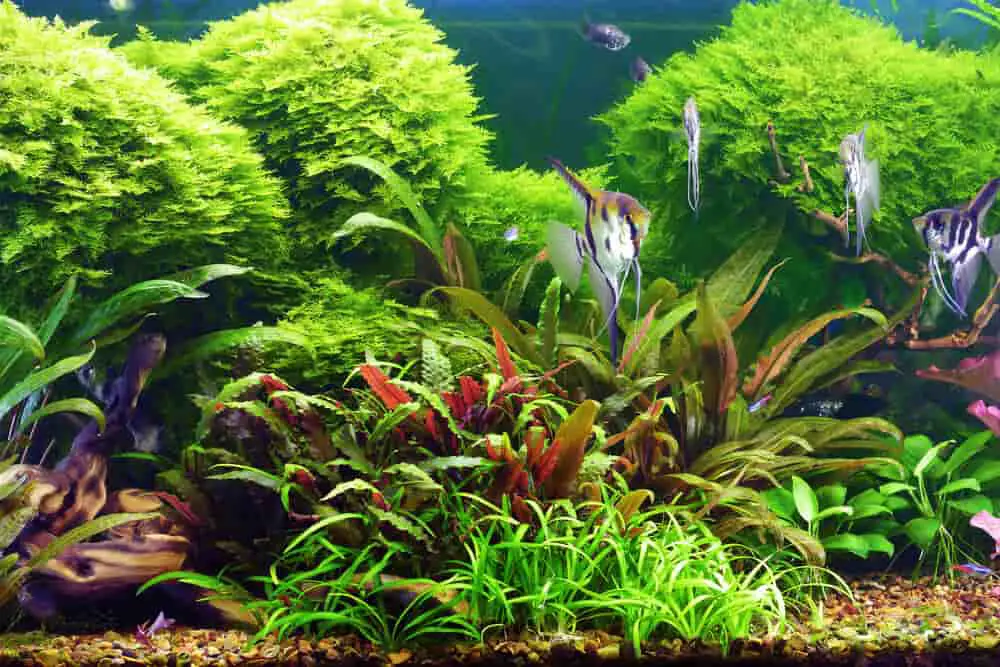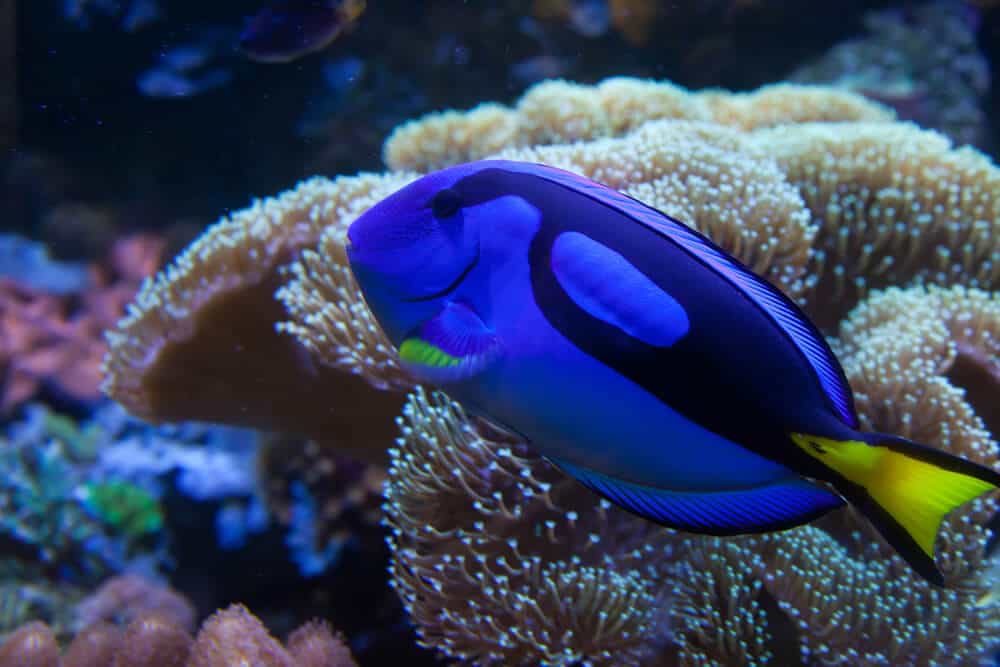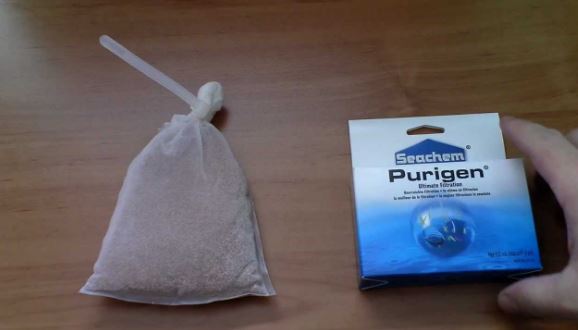
The first nitrogen cycle is a very important step everyone who owns a tank needs to complete.
Thankfully, it isn’t a difficult task, especially if you follow our beginner’s guide on how to master the nitrogen cycle of your aquarium.
Why speed up your tank’s nitrogen cycle?
Even though the nitrogen cycle isn’t hard to start, it can be time-consuming and even a little frustrating.
Eager new aquarium owners naturally want to add fish to their tanks as quickly as possible, but it isn’t a good idea to do so before your first nitrogen cycle is complete.
So if you’re one of those eager new aquarists, or you’ve already got fish in your tank and want to minimize the risk of ammonia, nitrite or nitrate poisoning, follow our simple guide on how to speed up your tank’s nitrogen cycle!
Contents
1. Getting Started
Before you can speed up your nitrogen cycle, you need to know what it is. It’ll also be useful for you to know the difference between starting with fish and starting without fish.
What is the Nitrogen Cycle?
Very briefly, the nitrogen cycle is a very important biological process that happens in your tank. In fact, that’s why it’s also called the biological cycle!
It starts with waste product turning into ammonia. The bacteria in your biological filter media (BFM) feed on that ammonia and turn it into nitrite. Different bacteria then feed on the nitrite and turn it into nitrate.
The nitrogen cycle is never-ending. For as long as you have a tank, you’ll have to deal with it. But the very first nitrogen cycle is maybe the most important.
If you haven’t already, please take a moment to read through our guide on mastering your nitrogen cycle! It’s very important that you understand the process before you try to speed it up.
Starting With Fish in Your Tank
As we said in our nitrogen cycle guide, starting with fish in your tank is not the best way. It might be the oldest method, but it does put your fish at risk.
That said, don’t worry if you’ve already got fish in your tank! It’s still very possible to start your nitrogen cycle with them. But because that puts your fish into contact with ammonia and nitrite, which are toxic for them, it becomes very important that you do speed it up.
Starting Without Fish in Your Tank
This is absolutely the best way to start your nitrogen cycle.
When you get started without fish in your tank, you have more room for error.
There are all sorts of problems that can come up while trying your start your first nitrogen cycle. We’ve explained them and how to take care of them in our beginner’s guide. So you should have a basic understanding of them by now.
Starting without fish in your tank means you aren’t putting any fish in danger. It’s a much more humane way to cycle your tank for the first time, and a lot of old school aquarists have switched over to this method.
But of course, you’re starting to feel a bit impatient, right? After all, the nitrogen cycle can take as long as 2 months to get started! And you want to add your fish as soon as possible.
That’s why, even if you’re doing a fishless cycle, this article is for you.
2. Speed Up Your Nitrogen Cycle
2 months is a long time to wait, right?
Don’t worry, we understand your frustration. After all, that’s why we’ve put together this guide to help you speed up your nitrogen cycle.
You’ll notice there are a few different steps. While you might not be able to follow all of them, you should try to follow as many of them as possible. This will help you speed up your nitrogen cycle in a safe, efficient way.
Just bear in mind that we’re speeding up your cycle, not making it instantaneous. Even if you follow all of these tips, it’ll still take a few weeks.
#1 – Start With the Basics
It’s always good to start with the basics. These 5 tips, in particular, are things that everyone can and should be doing.
Use a De-chlorinator
There isn’t much chlorine in your tap water. Certainly not enough for it to be harmful to us. But even a small amount in your tank will make it nearly impossible to get your nitrogen cycle started.
That’s because chlorine kills bacteria. And without bacteria in your BFM, your nitrogen cycle is nonexistent.
So what you want is to add a water conditioner to your water before you put it into your tank. Specifically, you need to use a de-chlorinator that will remove all of the chlorine from the water for you.
>> Click here to read our aritcle on the best water conditioners.
pH Level
This is something that beginners tend to overlook. And it’s not surprising – not many people think about pH levels unless they own a swimming pool!
But your tank has an ideal pH level of 7. With a healthy pH level, your bacteria will grow at their optimal rate. Anything below pH 7 and your bacteria will grow very slowly – or even stop growing altogether.
If you have a master aquarium test kit, it should include a pH test. Otherwise, you’ll need to get a separate pH test kit to make sure it’s not hindering your nitrogen cycle.
Temperature
Another thing that tends to catch beginners out is the water temperature.
Your tank’s water temperature plays a very important role in your nitrogen cycle. Just like pH levels, there’s an optimal range.
As a general rule, most experts suggest keeping your water temperature between 65°F and 85°F (about 18°C and 29°C). Ideally, though, you want to try to keep it between 78°F (about 26°C) and 85°F(about 29°C).
That’s because by the time your temperature drops to 65°F, your bacteria is already growing nearly 50% slower than it should.
Oxygen Levels
Fish, ammonia, and nitrite all thrive when your tank water is properly oxygenated.
It may seem strange to want to promote ammonia and nitrite in your tank. After all, ideally you need their levels.
But when you’re starting your nitrogen cycle, you need them. Otherwise, the bacteria that are going to help you keep their levels at 0 won’t have anything to feed on.
So for the sake of your nitrogen cycle (and later on your fish too!), make sure your aquarium has lots of dissolved oxygen in it. To do that, use either an air pump or oxygen stones. Having live plants in your tank will also help.
10 Hours of Light (Maximum)
If you do have plants in your aquarium, they’re going to need light. Otherwise, they’re just going to die – and aquarium plants tend to be rather expensive!
So of course, you need to make sure they get some light every day.
But be careful with this. Nitrifying bacteria – the bacteria that feed on ammonia and nitrite – grow best in the dark.
As tempting as it is to switch on your tank’s lights so you can admire your aquascape, wait until your nitrogen cycle is complete first! If you have any plants, keep your light exposure down to a maximum of 10 hours a day.
Also try to avoid putting your tank near any windows.
#2 – Kick Start Your Bacteria
If you’re trying to speed up your nitrogen cycle, what you need is more bacteria in less time. So what you can do is, in addition to all our tips above, use these tricks to give your bacteria a kick start.
Add More Waste (Like Fish Food)
Remember how we said ammonia comes from waste in your tank?
Well, if you have any live plants, they might lose some leaves. Once those start to decay, they’ll produce ammonia.
But it can take a long time for that to happen. Especially if you’ve bought new plants and are looking after them properly.
So what you can do instead is throw some fish food into your tank.
It might feel silly feeding an empty tank (assuming you’re doing a fishless cycle). But uneaten food is a great source of waste, and will help boost your ammonia levels.
The more ammonia there is, the more bacteria will grow.
But do try to keep the ammonia levels down to about 4ppm (parts per million) until you start seeing nitrite!
Use Cycling Products
A much, much better way to give your bacteria a kick start is to use cycling products.
Some people get confused between cycling products and water conditioners, so let’s clear things up quickly.
That’s the type of bacteria you want growing in your BFM, because they feed on ammonia and nitrite to turn them into nitrate.
So water conditioners (like de-chlorinators) help you get rid of things, while cycling products help you add things.
#3 – If You or a Friend Have a Mature Tank
Everyone can use the tips in #1 and #2 to speed up their nitrogen cycle.
This section is to help those of you who already have a mature tank and want to speed up the cycle for your new tank.
Or if you have a friend who’s willing to help you out.
If that’s you, keep reading!
Reuse Your Cycled Filter…
Assuming you’re no longer using your older tank, or you’ve got a new filter for it, using your older filter in your new tank will help speed up the cycle.
That’s because the older filter has already been cycled. It’s already got all of the bacteria you need.
Ideally, you still need to have a new filter for your new tank. But you can run the old filter next to the new one for a while to let the bacteria colonize your new BFM.
… Or Just Reuse It’s Filter Media
Alternatively, you might still be using that older filter in your mature tank. That’s okay, because you have another option.
When you clean your cycled filter’s media, or replace some of it with new media, keep the old media. You can add it to your new filter, or put it into a mesh bag and hang it in your new tank.
This does the same thing as running the 2 filters together in your new tank. The bacteria in your old filter media will help to colonize your new filter and speed up the cycle.
Let Your New Filter Run in Your Mature Tank
A third option that also works very well is to put your new filter into the old tank for a while.
This is kind of the opposite to the first tip, but it does exactly the same thing. The waste in your mature tank, as well as the bacteria in its filter, will help cultivate the bacteria you need for your new tank.
Once you’re ready, simply move the new filter into its proper tank. When you start your first nitrogen cycle, you’ll have a head start that can save you a couple of weeks.
Use a Cup of Gravel
Even if you’re already doing the above, this is a really neat trick that will help speed up your new cycle a little bit more.
Bacteria don’t only grow in your BFM, it also grows on the gravel you use on the bottom of your tank.
And because the gravel tends to also have a lot of waste come into contact with it, it’s a great way to speed up your nitrogen cycle.
All you need is 1 cup of cycled gravel. You can take it out of your older tank, borrow a cup from a friend, or ask the pet store to give you some.
And if the store’s assistant seems hesitant, offer to buy a cup of matured gravel for the same price you’d pay for a cup of brand new gravel. They’re not likely to say no then!
How Plants Can Help
Live plants have come up a few times in this guide, and for a very good reason. They don’t just look great, but they’re awesome for your nitrogen cycle.
Not only do they help add oxygen to your tank and (once their leave start to decay) add waste that helps to promote ammonia for your first cycle… They, just like gravel, have bacteria too!
So if you have a cycled tank, move over some of those plants.
3. Conclusion
There you have it – the complete beginner’s guide on how to speed up your tank’s nitrogen cycle.
When you’re working on getting that cycle started at a speed you’re happy with, there’s one more thing you need to be careful of. And that’s especially true if you already have fish in your tank from day 1.
New Tank Syndrome is very, very dangerous for your fish. Be sure to read our guide on how to save them from NTS so you can be sure to prevent or fix the problem!






